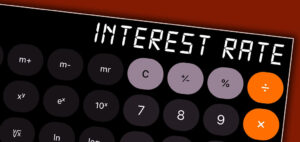
The interest rate on a loan, in it’s simplest terms, is the price you pay for borrowing money. It is a percentage of the principal borrowed amount, and can be a fixed rate or a variable rate. It costs money to borrow money.
If that is the definition of interest then what is APR?
Many people use the two terms interchangeably, but there are actually some minor differences between the two. While they are indeed very similar, they are not the same thing.
APR Explained
The interest rate is a part of APR, and in fact may be the majority of it. But interest stops at a percentage of the borrowed amount, and APR adds in additional factors.
Annual Percentage Rate gives a bigger picture view of the life of the loan, and how much you will be paying over time. This includes the interest, of course, but also factors in associated fees and charges that lenders levy on their customers.
The APR will always be a bit higher than the other number for this reason. It is supposed to give borrowers a broader overall understanding of what the loan is going to cost them.
Do We Need Two Numbers?
Just like interest, APR is a way consumers can compare different lenders in an apples-to-apples situation. Some lenders may have lower rates, but far higher APR because of associated fees and charges.
APR spreads out those fees, dividing them evenly out over every payment for the life of the loan. Because of this, it can be more valuable for people with extremely long repayment window (as with a mortgage).
Consequently, for short term loans the situation is very different.
For a quick look at our repayment options and APR, take a look at our loan rates page, or contact us with direct questions!
Or if you think you are ready to get approved for your loan today, apply here
